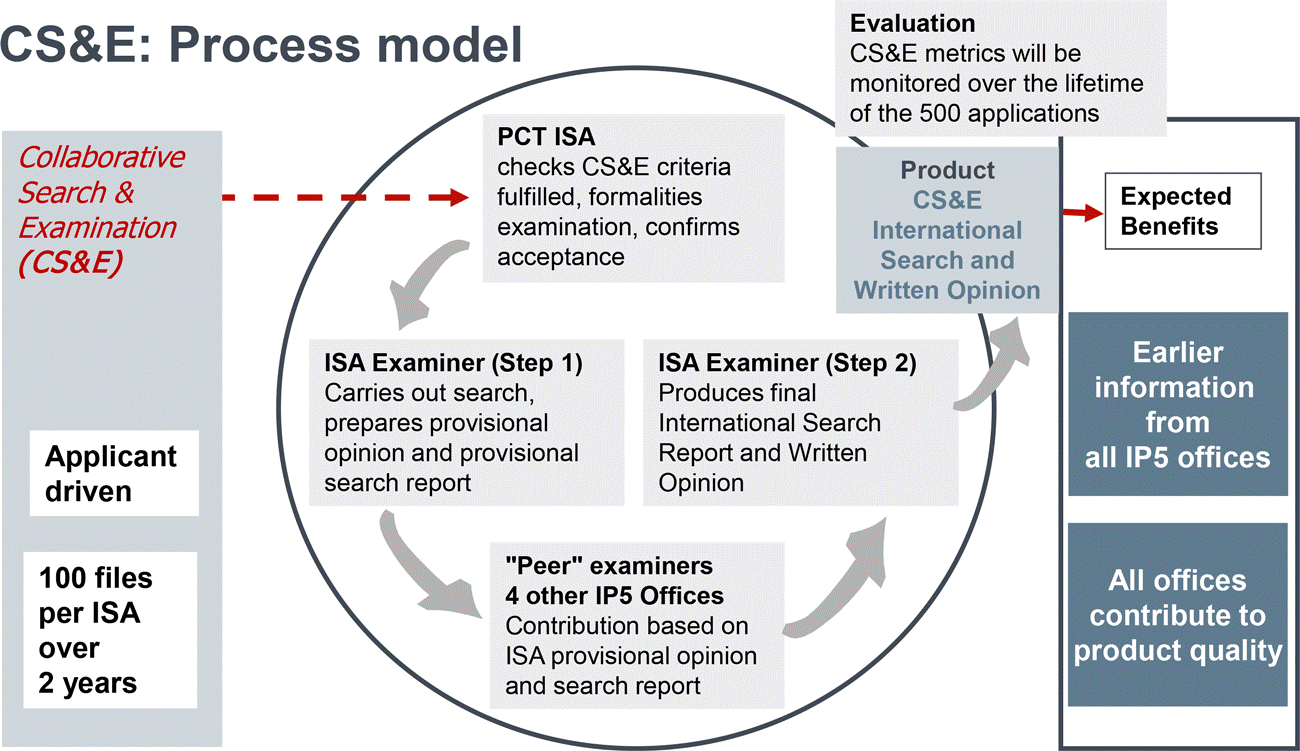IP5 Pilot Project on Collaborative Search and Examination Under the PCT
On July 1st 2018, the IP5 Offices launched the second phase of a pilot project aimed at testing and further developing the concept of Collaborative Search Examination (CS&E), a collaboration effort amongst the five “IP5 Offices”, i.e. the United States Patent and Trademark Office (USPTO), the State Intellectual Property Office the People’s Republic of China (SIPO), the Japan Patent Office (JPO), the European Patent Office (EPO), the Korean Intellectual Property Office (KIPO).
The mission of this collaborative project is to provide a product, i.e. the “CS&E International Search and Written Opinion”, of which the main expected benefit for the applicants is earlier feedback from all IP5 offices. While the core of the written opinion will remain the one of the chosen Office as International Searching Authority (ISA), a.k.a. “main ISA”, all remaining 4 IP5 offices are now bound to contribute during the application process. The project also entails the assessment of user interest in a regular CS&E product, as well as the expected efficiency gains for the offices.
In this pilot project, the examiner from the IP5 Office acting as competent ISA under Rule 35 PCT for a given international application (“the main examiner”) will conduct the search and examination as with any other international application and establish a provisional international search report (provisional ISR) and written opinion (provisional WO). These provisional work products will then be transmitted to peer examiners from the other participating IP5 Offices in their capacity as ISAs. Peer examiners will provide the main examiner with their contributions, taking into consideration the provisional ISR and provisional WO. The final ISR and final WO will be established by the main examiner after consideration of the contributions from the peer examiners.

This second, operational phase of the pilot project follows the preparative phase which launched in June 2016. It will start on July 1st 2018 and run until June 1st 2021. Each main ISA aims to accept 100 international applications within the course of two years, and is required to ensure diversity among corresponding technical fields, while respecting the collaborative timeline.
During this phase, the WIPO wants to solicit Applicants directly by letting them select the international applications involved in the pilot project, and will not charge any supplementary search fee. In order to be considered, Applicants are not allowed to have more than 10 accepted international applications within a same main ISA, and should file their application in English, until other languages are accepted into the pilot, which is forecasted to happen starting January 1st, 2019. Each ISA will then inform applicants of this possibility by way of a communication published on its website. Applicants wishing to participate in the pilot project should submit a request via a standard participation form, which has to be filed together with the international application at the chosen main ISA Office, be it one of the IP5 Offices or the International Bureau. The participation form can be generated using the system provided within ePCT, is available in all official languages of the IP5 offices, and can be found on the WIPO website at www.wipo.int/pct/en/filing/cse.html.
Towards the end of the project, participating applicants will be asked to complete a questionnaire about their interest in a regular CS&E product, and the outcome of the pilot will also cover the assessment of the collaboration in the subsequent national/regional phases.
Overall, the CS&E product should be a source of enrichment for Applicants wanting to get wide protection, by providing a wealth of supplementary coordinated information. Indeed, although the opinion of the main ISA will have to be taken into account, peer contributions regarding additional search or non-unity cases, for example, will be in line with the standard procedures followed by the corresponding peer ISAs. At least for these reasons, the CS&E should be a nice added value to the Applicants.




